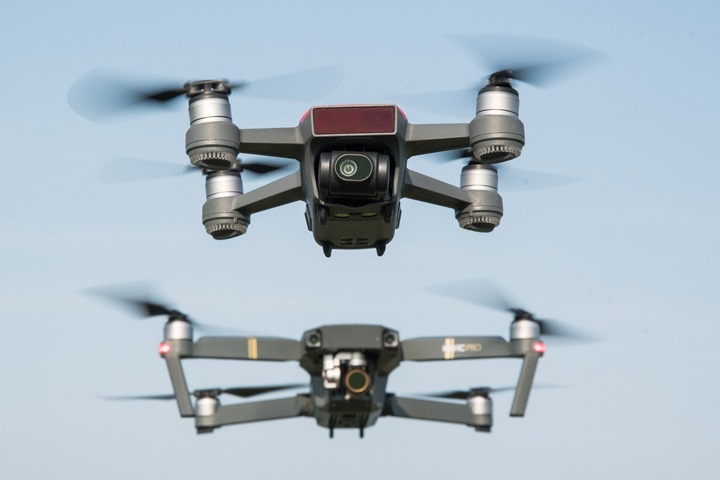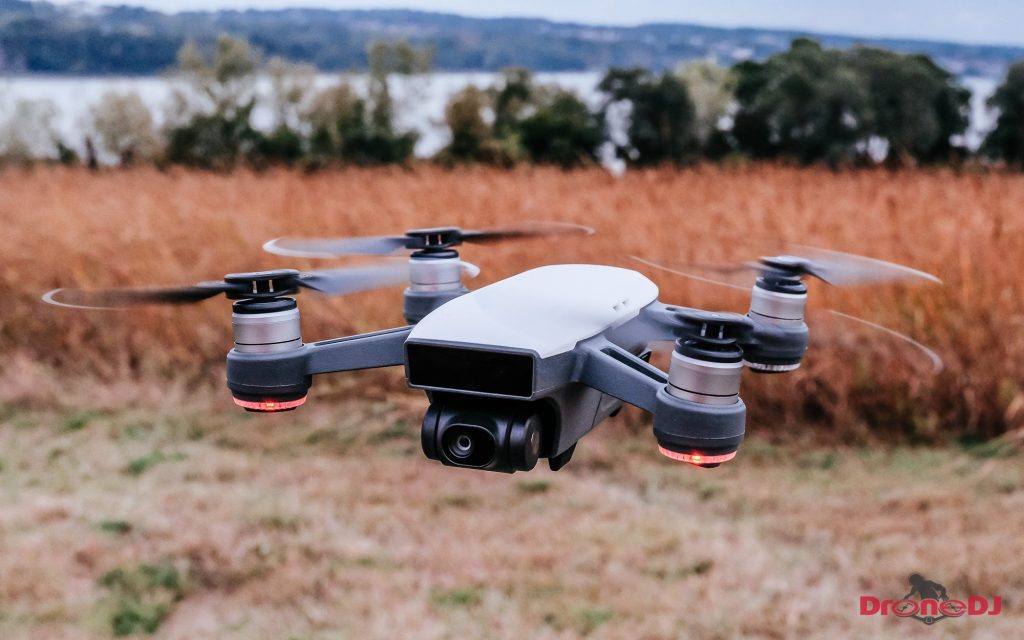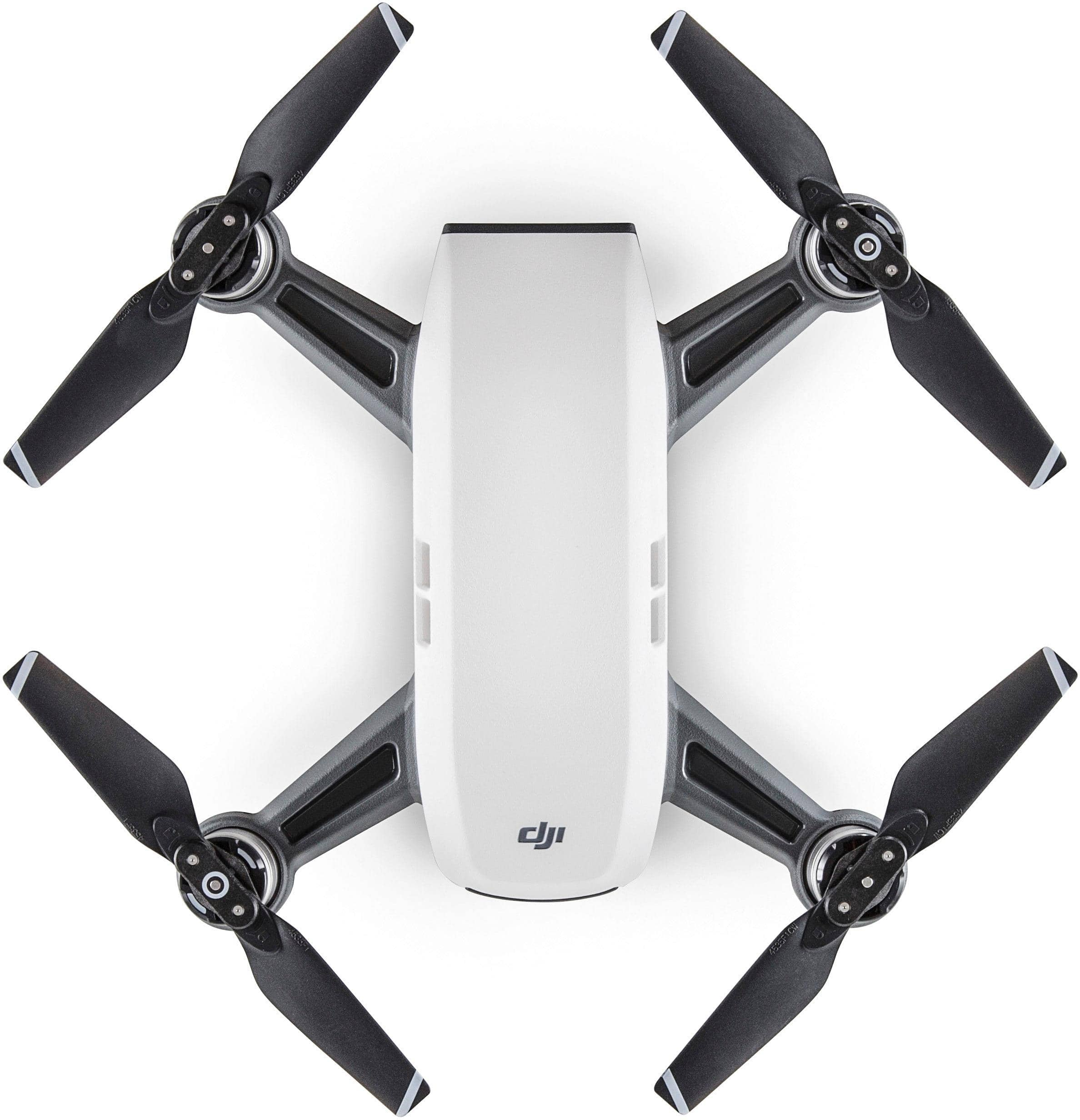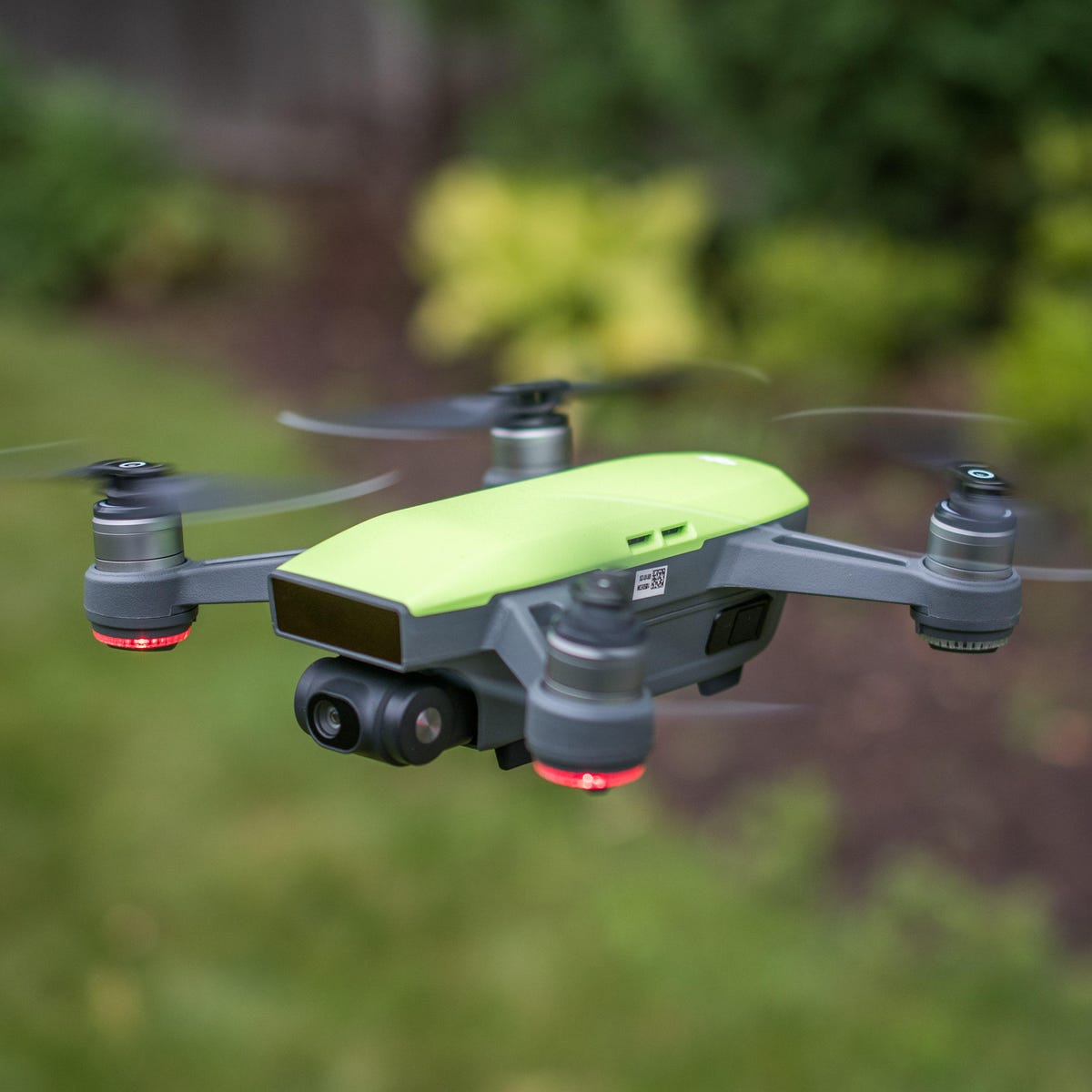Introduction
Overview of DJI Spark
The DJI Spark is a compact, light-weight drone that’s as user-friendly as it is capable. Introduced in 2017, it quickly captured the hearts of hobbyist pilots and photographers alike with its portable design and impressive features. Whether you’re a beginner looking to explore the skies or an experienced flyer wanting a travel-friendly option, the Spark stands out as an ideal drone for various users. What makes the Spark particularly unique is its ability to take off and land from the palm of your hand. It’s powered by DJI’s superb technology, featuring intuitive controls that make flying both simple and safe. With a weight of just 300 grams, you can carry it nearly anywhere, making it perfect for spontaneous adventures. The best part? You don’t necessarily need a remote controller. You can operate it through your smartphone or even through hand gestures, which adds a touch of convenience and fun to your flying experience!
Key Features
The DJI Spark is loaded with features that enhance its appeal. Below are some highlights that define this drone’s capabilities:
- Camera Quality: The Spark sports a 12 MP camera capable of shooting 1080p video at 30 frames per second. This ensures that your aerial shots are not only crisp but also vibrant, making your memories look incredible.
- Intelligent Flight Modes: Enjoy flying with built-in modes like ActiveTrack, TapFly, and QuickShots. These allow you to capture complex shots without fumbling, letting you focus on your surroundings rather than the technicalities of flight.
- Obstacle Avoidance: One of the standout features is the intelligent flight safety system. With forward obstacle sensors, the Spark can detect and avoid obstacles, making it safer for new pilots to take to the skies.
- User-Friendly Controls: Whether you use the controller or your smartphone, the controls are straightforward. The DJI GO 4 app provides a clean interface to manage your flight settings, and you can easily share your stunning shots on social media.
- Compact and Lightweight Design: The Spark’s foldable legs contribute to its small size, allowing it to fit snugly into most backpacks, making it perfect for travel.
- Battery Life: With up to 16 minutes of flight time, you’ll have ample opportunity to enjoy the views. While that may seem limited, most of your flying needs can be met within that duration.
In summary, the DJI Spark is not just a drone; it’s more like a versatile companion that you can quickly deploy for both fun flying and photography. Your adventures await—just grab the Spark, and let’s get flying! 🛩️

Design and Build
Compact Size
One of the first things you’ll notice about the DJI Spark is its remarkably compact size. Weighing in at just about 300 grams and measuring only 143 x 143 x 55 mm, it’s incredibly portable. This means you can easily slip it into your backpack or even a large pocket, ready for spontaneous adventures. I remember a weekend trip to the mountains; the Spark was my go-to drone because I didn’t have to lug around heavy equipment. Its small footprint doesn’t sacrifice performance either. Despite its size, the Spark boasts a sturdy design that can withstand minor mishaps during your flying sessions. You’ll be surprised at how well it holds up to the rigors of outdoor flying. Here are a few key points regarding its compact design:
- Easy Transport: Perfect for hiking, traveling, or even daily commutes. Whether you’re hitting the trails or strolling through the city, the Spark can easily accompany you.
- Quick Setup: The drone can be deployed in seconds. Just unfold the arms, power it on, and you’re ready to fly.
- Discreet Flying: Its small size allows for more inconspicuous flights, great for capturing candid moments without attracting too much attention.
Quality of Materials Used
The build quality of the DJI Spark is testament to DJI’s commitment to crafting reliable drones. Constructed with a mix of durable plastics and a robust design, it not only looks sleek but feels premium in your hands. You can tell this is not a toy; it’s built for drone enthusiasts who appreciate quality. Here are a few highlights about the materials used:
- Durable Plating: The outer casing is made from high-quality plastic that can handle occasional bumps and scrapes. While it’s certainly a lightweight design, it doesn’t skimp on robustness.
- Foldable Design: The arms and propellers fold seamlessly, ensuring that they remain snug and secure during transport. This design reduces the risk of breakage—something many users appreciate.
- Weather Resistance: While not fully waterproof, the Spark’s materials help it withstand light rain. During one memorable flight, I was caught in a drizzle but was pleasantly surprised to find the Spark still functioning perfectly afterward, although I wouldn’t recommend flying in heavy rain!
- Aesthetically Pleasing: Beyond practicality, the Spark comes in several colors, allowing you to choose one that reflects your personality, from classic white to vibrant red.
In conclusion, the DJI Spark excels in both compactness and quality materials. It’s a design that incorporates user-friendliness and durability, making it an excellent choice for both the novice and the seasoned drone pilot. With this drone, you’ll not only enjoy an impressive performance but also a sleek device that feels good to use. ✈️

Camera Performance
Image Quality
When it comes to capturing stunning images, the DJI Spark truly shines. Its 12 MP camera delivers breathtaking photos that can rival those taken by far more expensive drones. The clarity and vibrancy of the images are remarkable, making it an excellent choice for anyone interested in aerial photography. In my own experience, I was blown away the first time I flew the Spark over a beautiful landscape. The colors popped, and the detail was crystal clear—even in the distance. Here are some key features that contribute to the impressive image quality:
- 1/2.3” CMOS Sensor: This high-quality sensor ensures that your shots are clear, detailed, and full of life, even in low-light situations.
- F2.6 Lens: The wide aperture allows for better light capture, which is particularly beneficial during twilight or early morning shots. I captured some gorgeous sunrise photos that have since become my favorites.
- HDR Mode: If you’re in contrasting lighting conditions, the HDR mode helps balance the highlights and shadows in your photos, resulting in more natural images. It’s super easy to activate and works wonders.
- JPEG & DNG Formats: The option to shoot in RAW (DNG) format gives you greater flexibility in post-editing, allowing you to tweak your photos for the best results.
Overall, the image quality that the Spark provides is nothing short of impressive for a drone of its size, ensuring you won’t miss those picture-perfect moments.
Video Recording Capabilities
Apart from its still imagery prowess, the DJI Spark excels in video recording, too. It supports 1080p video at 30 fps, which is ideal for creating smooth, professional-looking footage. I remember using the Spark during a weekend beach trip, capturing thrilling waves crashing against the shore. The resulting video was both exhilarating and aesthetically pleasing! Here’s a breakdown of video features that elevate your filming experience:
- Stabilization: The drone features a 2-axis mechanical gimbal that helps smooth out your footage, eliminating the shakiness often experienced in handheld filming. This means your videos will look polished and professional right out of the box.
- QuickShots: With various shooting modes like Rocket, Dronie, Circle, and Helix, these automated shots are easy to execute and add exciting flair to your videos without needing advanced piloting skills. It’s like having your own personal cameraman!
- 720p Live View: The live feed provides a 720p stream directly to your mobile device, so you can frame your shots perfectly before hitting record.
- Editing Options: The included DJI GO 4 app offers simple editing tools. You can trim, add music, and apply filters to your videos directly from your phone, making it easy to share your adventures quickly.
In summary, the DJI Spark’s camera performance offers exceptional image quality and robust video recording capabilities. It serves as a reliable companion for both casual snapping and serious video projects, allowing you to capture and share your favorite moments with brilliance. Capture the world from above, and you might just be amazed at what you can create! 📸✨

Flight Experience
Flight Modes
When it comes to flying the DJI Spark, you’re in for a treat with its diverse flight modes that cater to both beginners and more seasoned pilots. This variety helps make every flight a unique experience, allowing you to capture stunning shots with minimal effort. Let’s break down some of the standout flight modes:
- ActiveTrack: This mode allows the Spark to automatically follow and capture a selected subject, whether it’s you riding a bike or your friend hiking. I once tested this mode during an outdoor family gathering, and it effortlessly tracked my nephew as he ran around. The results were not only fun but let us relax and enjoy the moment instead of worrying about piloting.
- TapFly: With TapFly, simply tap on your smartphone screen to direct the drone where to fly. This mode is fantastic for beginners since you don’t need to worry about intricate controls. Just point to where you want to go, and off it goes, capturing everything along the way.
- QuickShots: These pre-programmed cinematic techniques allow you to deliver stunning shots with just a few taps. You can choose from Rocket, Dronie, Circle, and Helix modes that create awe-inspiring clips effortlessly. I was amazed at how simple it was to impress my friends with videos that looked professionally edited.
- Gesture Mode: This unique feature allows you to control the Spark using simple hand gestures. You can have it take off, land, or even frame selfies by waving your hands. I had a blast experimenting with it during a trip to the park; it’s interactive and adds a fun twist to flying.
Ease of Control
One of the most impressive aspects of the DJI Spark is how easy it is to control. Whether you choose to use the provided remote or your smartphone, you’ll find the controls straightforward, making it accessible for everyone.
- Intuitive Controls: The self-explanatory interface makes it easy for newcomers to pick up, while experienced pilots can still adjust settings to suit their flying style. Personally, I remember feeling a blend of excitement and nervousness on my first flight, but the Spark’s controls made me feel confident right away.
- DJI GO 4 App: The app enhances the flight experience further by providing a clean interface with various features and real-time telemetry data, such as battery life, altitude, and distance. I often check it during flights to ensure everything is within limits and to plan my next shot effectively.
- Return to Home Function: This safety feature means you can fly with peace of mind. If you lose connection or run out of battery, the Spark automatically returns to its launch point, which saved me once during a particularly windy day when I felt it drifting too far.
In summary, the DJI Spark delivers an exceptional flight experience through its engaging flight modes and ease of control. It allows for creativity and exploration without the stress of complicated piloting. Whether you’re a novice or a pro, you’ll find joy in every flight and the ability to capture stunning moments from the sky. So, strap in and get ready to soar! 🌤️✈️

Battery Life and Charging
Flight Time
Battery life is a crucial factor to consider when choosing a drone, and the DJI Spark offers a respectable flight time that balances performance and convenience. With a maximum flight time of around 16 minutes on a full charge, you’ll have plenty of time to explore and capture stunning aerial shots. In my experience, 16 minutes might not sound like a lot compared to some more advanced models, but I’ve found it to be just enough for most casual flying sessions. Here are a few reasons why the flight time is adequate:
- Efficient Power Management: The Spark’s battery is designed efficiently to provide reliable performance without weighing it down. This contributes to maintaining the drone’s lightweight, compact nature, essential for portability.
- Planning Your Passes: While 16 minutes is your maximum theoretical flight time, keep in mind that using flight modes like ActiveTrack and QuickShots can use up a bit more battery. I often plan my shots in advance, maximizing my time in the air to make every minute count.
- Reserve Power: The Spark includes smart battery management that alerts you when it’s time to land. I appreciate this feature as it ensures I’m never caught off guard mid-flight, reducing the chances of an unwanted crash.
In situations where I’ve tested my limits, like filming at a scenic viewpoint, I typically make sure to fly for about 10-12 minutes and then land to review the footage. This approach gives me the chance to recharge or switch out batteries if I’m using spares.
Charging Time
Charging the DJI Spark is a relatively straightforward process. The intelligent battery system is designed for convenience, allowing you to get back in the air without long delays.
- Standard Charging Time: A fully discharged battery will take around 1.5 hours to recharge when using the standard charger. During this time, you can review your footage, plan your next flight, or simply enjoy the beautiful scenery around you.
- USB Charging Option: One of the best features is the option to charge your Spark via a USB port. You can charge it using a power bank while on the go, making it an excellent choice for outdoor enthusiasts. I often carry a portable charger with me during hikes, so I never miss the opportunity to take that perfect shot!
- Battery Maintenance Tips: To maximize your battery’s lifespan, avoid letting it drain completely before recharging, and store it in a cool, dry place when not in use. I’ve found it helpful to have a dedicated space for my drone gear, ensuring my batteries are well maintained.
In summary, while the DJI Spark offers a decent flight time, its efficient charging capabilities help you maximize your aerial adventures. Whether lounging at a scenic spot or on a quick trip, you can ensure you’ll be back in the skies quickly, capturing those invaluable moments. It’s all about planning your flights and staying charged—not just your drone but your excitement for the next adventure! 🔋✈️

Accessories and Add-Ons
Recommended Accessories
To fully enhance your DJI Spark experience, investing in some quality accessories can make a significant difference. From extra batteries to better carrying options, these additions can improve your flying experience and help you make the most of your adventures. Here are some indispensable accessories I’ve found to be super helpful:
- Extra Batteries: The most crucial accessory for any drone pilot! Having one or two extra batteries can extend your total flight time, allowing for more exploration. I usually carry two spares with me; you never know when you’ll find that perfect spot to capture.
- Propeller Guards: These are especially important for beginners or when flying in crowded areas. They help protect your propellers, ensuring you can avoid mid-air mishaps. I once had a close call flying too close to a tree, and the guards prevented any damage to my Spark.
- Carrying Case: A sturdy yet lightweight case specifically designed for the Spark is a must-have. It not only protects your drone, but it also makes transportation easier. I love my case because it holds all my accessories in one neat package, perfect for road trips or hiking excursions.
- ND Filters: Neutral Density (ND) filters are game-changers when it comes to achieving beautiful videos and photos. They help reduce glare and enhance image quality, especially on bright sunny days. I recently tried them out, and they completely transformed the footage; the colors became richer and more balanced.
- Screen Sunshade: When flying on a bright day, glare on your smartphone or tablet screen can be frustrating. A sunshade can help improve visibility so you can focus on flying and capturing great shots.
Compatibility with Other Devices
One of the great things about the DJI Spark is its compatibility with a range of devices, which enhances its versatility. You can easily control the drone and manage your footage through your smartphone or tablet, opening up a world of possibilities. Here’s a quick rundown of its compatibility features:
- Smartphone Compatibility: The DJI GO 4 app is available on both iOS and Android devices, making it easy to connect your phone for flight control and live video feed. I’ve flown with both a Samsung and an iPhone, and the app performs smoothly on either platform.
- Controller Options: Although the Spark can be flown using just a smartphone, using the dedicated remote controller offers enhanced control and range. It’s compatible with the Spark, and once you try it, you’ll see how much easier it is to operate.
- Cloud Storage Services: After capturing stunning shots, the DJI GO 4 app allows you to upload your photos and videos directly to cloud storage services or social media platforms. I love how easily I can share my adventures on social media right after landing!
In conclusion, equipping your DJI Spark with the right accessories can elevate your flying experience significantly. Whether it’s ensuring longer flight times, enhancing photography, or providing secure transportation, these items will help you make the most out of every flight. Plus, knowing that your gear is compatible with various devices makes the entire experience seamless and enjoyable. Get ready to explore the skies! 🚀📱

Software and App Integration
DJI GO App
The DJI GO app is an essential companion for any DJI Spark pilot, turning your smartphone or tablet into a powerful controller and monitoring system. This app offers a sleek interface that makes managing your drone, capturing footage, and editing your content a breeze. I remember the first time I launched the app; the intuitive design made it incredibly easy to get started, and I felt like a pro almost instantly. Here are a few standout features of the DJI GO app that enhance your flying experience:
- Live View: The app gives you a 720p live video feed from your Spark’s camera directly to your device. This allows you to frame your shots perfectly as you fly. I’ve often relied on this feature to ensure that remarkable landscapes are captured just right!
- Flight Data Tracking: The app displays vital flight information such as altitude, speed, distance, and battery life in real time, so you never miss a beat during your journey. I appreciate having this data at my fingertips, as it helps me make informed decisions mid-flight.
- Editing Tools: After capturing photos and videos, you can utilize the app’s built-in editing tools to trim, adjust, and even add music to your creations before sharing them. There were times when I finished a flight and quickly edited the highlights while relaxing in a café—it’s that convenient!
- Flight Planning: For those interested in more precise flying, the app allows you to create customized flight paths for your Spark. I’ve used this feature to plan out scenic maneuvers, ensuring I didn’t miss specific angles during photo sessions.
Firmware Updates
Keeping your DJI Spark up to date is crucial to maximizing its performance and ensuring a smooth flying experience. Regular firmware updates enhance the drone’s functionality and fix any bugs or issues you may encounter. Luckily, the process is easy and can be done through the DJI GO app. Here’s how firmware updates benefit your Spark:
- Enhanced Performance: Updates often include improvements to drone stability, flight modes, and the overall capturing experience. I noticed a significant improvement in my Spark’s responsiveness after one of the updates, especially during quick maneuvers.
- New Features: Occasionally, DJI rolls out exciting new features through firmware updates that enhance the capabilities of your Spark. It felt like getting a brand-new drone when I discovered several added flight modes after an update!
- Safety First: Firmware updates can fix vulnerabilities and enhance the safety protocols of the Spark, providing peace of mind while you fly. I always make it a habit to check for updates before heading out for a new adventure.
- Easy Update Process: The app simplifies the update process. As long as your Spark is connected to your Wi-Fi and the battery levels are sufficient, you’ll receive notifications for available updates. I can typically get my updates done in under 15 minutes.
In conclusion, the integration of software and app features within the DJI Spark creates a seamless flying experience. The DJI GO app provides comprehensive tools for capturing, editing, and optimizing your flight sessions, while firmware updates ensure that your drone performs at its best. As you navigate the skies, you’ll appreciate how technology enhances your journey, making every flight enjoyable and productive. Ready to take your flying game to the next level? Let’s get started! 📱✨

Performance in Different Weather Conditions
Wind Resistance
When heading out for a flight with your DJI Spark, understanding its performance in various weather conditions is essential. One significant factor you’ll want to consider is wind resistance. The Spark is designed to handle a moderate range of wind conditions, which can make a noticeable difference during your flying adventures. In my personal flying experience, I’ve tested the Spark on breezy days and found it surprisingly stable. Here’s what you need to know about its wind resistance:
- Maximum Wind Speed: The DJI Spark can handle winds up to approximately 28.5 km/h (about 18 mph). While this isn’t a hurricane, it’s wind that can catch many casual drones off guard. I once flew during slightly gusty conditions and was pleasantly surprised by how well the Spark held its position, even when facing headwinds.
- Stability Technology: The built-in GPS and vision positioning systems play a critical role in maintaining stability in the air. The Spark automatically adjusts its motors to combat wind pressure, ensuring a steadier flight. This feature has saved me a couple of times from drift, especially when trying to get that perfect shot near a cliff.
- Safety Precautions: While the Spark handles moderate winds well, it’s crucial to trust your judgment. If the wind is howling, consider delaying your flight. After a less-than-pleasant experience with a gust that nearly blew my Spark off course, I learned to always check local wind conditions before flying.
Temperature Tolerance
Temperature can also significantly impact a drone’s performance, and the DJI Spark is built to function effectively in a variety of temperatures. However, understanding its limitations will ensure a safe flying experience.
- Operating Temperature Range: The Spark performs best within temperatures of 0°C to 40°C (32°F to 104°F). I’ve taken my Spark out during chilly autumn outings where the temperature dipped close to freezing, and I noticed a shorter battery life than on warmer days.
- Battery Performance: Cold weather can impact battery efficiency, leading to reduced flight times. It’s a good idea to keep your batteries warm before flying; I sometimes store them in my inner jacket pocket while hiking to keep their temperature up just before use.
- Avoiding Overheating: On hot summer days, ensure that your Spark isn’t exposed to direct sunlight for extended periods. I learned this the hard way when I noticed some overheating warnings during a particularly sunny flight. Keeping the drone in my backpack when not in use helped maintain a consistent temperature and performance.
In conclusion, while the DJI Spark is built to withstand various weather conditions, it’s essential to be aware of its limits regarding wind resistance and temperature tolerance. By respecting these boundaries and taking suitable precautions, your flying experience will be safer and more enjoyable. So whether it’s a breezy afternoon or a warm sunny day, prepare accordingly, and get ready to capture breathtaking aerial views! ☁️🌞

Portability and Storage
Travel-Friendly Design
When it comes to drone adventures, portability is key, and the DJI Spark genuinely excels in this department. Designed with the on-the-go user in mind, the Spark is compact and lightweight, making it perfect for travel enthusiasts like you and me. At just 300 grams and foldable arms, the Spark easily slips into a backpack or even a large coat pocket. During my last hiking trip, I was amazed at how I could carry my Spark along with my other gear without any hassle. Here are a few features that emphasize its travel-friendly design:
- Compact Form Factor: When folded, the Spark’s dimensions are only 143 x 143 x 55 mm. This compact size means you don’t need to invest in a specialized drone bag if you don’t want to, although those can be super handy!
- Quick Setup and Pack Down: It only takes seconds to unfold the Spark and get it ready for takeoff. I recall a beautiful sunset at a remote beach; within moments of arriving, I had my Spark up in the air, capturing the stunning colors.
- Minimal Weight: Weighing about the same as a large water bottle, it won’t add significant bulk to your luggage. On a recent trip to the mountains, I was surprised at how easily I could carry it up steep trails without feeling the weight of extra gear.
Storage Options
To maximize your flying experience, having the right storage solutions for your DJI Spark and its accessories is essential. Here’s what I recommend for keeping everything organized and safe:
- Dedicated Carrying Cases: Investing in a soft case or backpack specifically designed for the Spark can protect your drone and accessories from the bumps of travel. These cases often include custom compartments for everything, ensuring you have all your gear at hand. I recently purchased a stylish, rugged case that securely holds my Spark, extra batteries, and props, making it easy to grab and go.
- Extra Battery Storage: Consider purchasing a designated battery case or pouch. Since battery life is limited, having a secure way to keep extra batteries organized can help. I use a padded, zippered pouch with individual slots for each battery, which prevents them from bumping against each other during transport.
- Propeller Protection: To avoid any damage during travel, propeller guards are a practical accessory. Many cases come with special compartments to hold propellers safely. After one trip where I found a bent propeller—leading to an awkward flying experience—I made it a point to invest in better storage solutions.
- Memory Card Organization: When capturing breathtaking moments, your storage cards can fill up quickly. I keep my microSD cards in a small, portable card holder that fits neatly in my carrying case. This way, I can easily access and organize my footage once I’m back from my adventures.
In summary, the portability and storage options for the DJI Spark make it an excellent companion for those who love to travel and capture stunning aerial views. With its compact, travel-friendly design and thoughtful storage accessories, you can take your Spark anywhere without compromising on safety or convenience. So pack up, hit the road, and let your creativity take flight! 🎒📷✈️

Price and Value for Money
Cost Analysis
When considering the DJI Spark, affordability plays a vital role, particularly for those of us who want quality without breaking the bank. The Spark is priced competitively for a drone packed with features, typically retailing around $399 for the standard version. For newcomers to the world of drones, this price point strikes a balance between performance and cost. From my own experience, I was initially hesitant about spending nearly $400, but after researching, I realized the Spark’s offered value far outweighed the price tag. Here’s a breakdown of why it represents a solid investment:
- Feature Richness: The Spark’s camera capabilities, intelligent flight modes, and ease of use create a package that is hard to overlook. For a drone at this price, the high-quality 12 MP camera and 1080p video recording are impressive.
- Durability and Quality: The materials used in the Spark’s construction make it a long-lasting device. My own Spark has endured several outdoor adventures, and despite the occasional bump, it’s still functioning like new.
- Additional Costs: While the price may seem reasonable, don’t forget to account for accessories like extra batteries, a carrying case, and propeller guards. In my case, I spent another $100 on essential extras, which made a significant difference in my flying experience.
- Future-Proofing: With frequent firmware updates and improvements, the Spark remains relevant. Investing in it feels like you’re getting a drone that’s not just current, but also adaptable to future advancements in drone technology.
Comparison with Competing Models
Now, let’s see how the DJI Spark stacks up against some competing models at similar price points. Competitors like the Holy Stone HS720 and the Potensic D80 have entered the market with appealing features, but they each have their pros and cons.
| Feature | DJI Spark | Holy Stone HS720 | Potensic D80 |
|---|---|---|---|
| Camera | 12 MP, 1080p | 12 MP, 2K | 1080p |
| Flight Time | Up to 16 minutes | Up to 26 minutes | Up to 20 minutes |
| Max Wind Resistance | 28.5 km/h | 25 km/h | 18 km/h |
| Intelligent Flight Modes | Yes | Yes | Limited |
| Portability | Lightweight | Bulkier | Moderate |
| Price | ~$399 | ~$299 | ~$199 |
- Camera Quality: The Spark’s camera quality is often unbeatable at this price range, especially considering it shoots in 1080p. While competitors offer higher resolution in some features, they may lack the overall image processing quality.
- Flight Time: The Holy Stone HS720 offers extended flight time, but I remember hearing friends mention that its heavier weight affected its stability in windy conditions.
- Portability: The Spark is notably more portable than most of its competitors. I’ve found that being able to pack it away easily contributes to a more convenient drone experience, especially when traveling.
- Overall Value: While other drones may have certain advantages, the balance of performance, portability, and quality makes the Spark a compelling choice for most drone enthusiasts.
In conclusion, considering its cost and the value it provides, the DJI Spark remains one of the best options in the market. If you’re looking for performance without a premium price tag, this drone delivers, allowing you to step into aerial photography and videography with confidence. So whether you’re a seasoned pilot or just getting started, the Spark is worth every penny! 💰🚁



